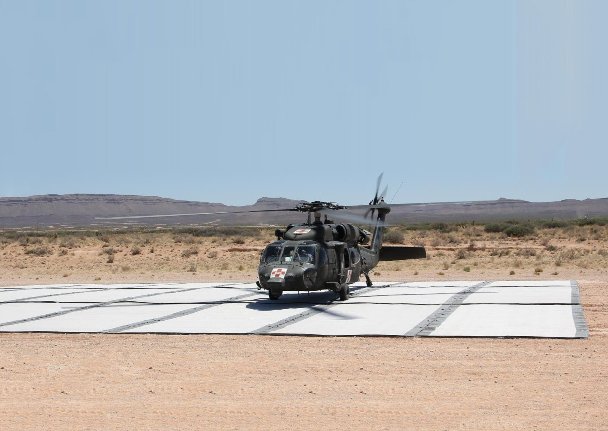Indian Army’s combat engineers have asked private players to develop portable helipads in challenging terrains amid its border row with the Chinese PLA in Ladakh.
A portable helipad is a temporary structure, which can be assembled or dismantled quickly providing helicopters a safe place to land and take-off. These cost-effective and makeshift helipads would be deployed where the terrain isn’t favorable or a place where a permanent helipad isn’t required, or where time is a critical factor.
These helipads could also work as a part of rapid deployment to forward bases for Army and Air Force helicopters in case of hostilities, and also for disaster relief operations.
The Army’s new requirement asks for a platform where all types of helicopters can land and take off, including the transport helicopters like CH-47 Chinook, Mi-17V5, and attack gunships like the AH-64E Apache Guardian, Rudra, and the Light Combat Helicopter.
These aircraft have a crucial role in the Army and combined arms’ operations including much-needed logistics and transportation, special operations missions, search and rescue, human aid & disaster relief, and providing close air support for combat operations.
Apart from the aforementioned rotorcraft, the Indian Army and the Air Force also operate the ALH Dhruv, Chetak, Cheetah, Mi-24/25/35. Light Utility Helicopters will join them soon.
In addition, the IAF operates the huge Mi-26 heavy transport helicopter, which is the heaviest helicopter to ever go into serial production. It is unclear if the new requirement calls for the capability to handle this aircraft as well.
This helipad would have been a crucial technology ramp up for the Indian Armed Forces, as fast deployment in worsening situations is a much-needed capability. There was an acute need for such helipads during the recent Indo-China military standoff where the IAF had to ramp up the far-flung airfields and develop infrastructure in less time to support forward air operations.
According to reports, the Army wants portable helipads with an initial requirement of 25×25 meters, and larger sizes up to 100×100 meters would be considered at a later stage. The size could be reduced or increased with the reduction or addition of separate ‘panels’.
The requirements call for at least 50% of the contents to be indigenous and should be modular, rugged, corrosion-resistant, and strong enough to withstand downward rotor-wash of the aircraft.
Also, it should be able to be quickly deployed by a team of 10 soldiers after a surface preparation within 90 minutes. All the equipment including assembly tools should be able to fit in a single truck, according to the Army.
However, these quick-deploy helipads aren’t a new concept for the Indian Army. It has been used in and around various forward posts to facilitate air maintenance, especially in Siachen.

















